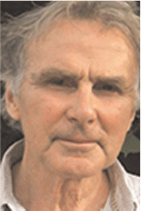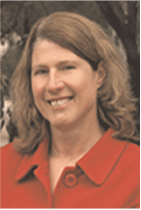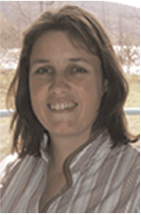Continental extension and break-up—using the Australian margins as a case study
Kenneth McDermott A , Paul Bellingham A , Rod Graham B , James Pindell C , Lynn Pryer D , Donna Cathro D and Brian Horn AA ION Geophysical.
B Independent Consultant.
C Tectonic Analysis.
D FROGTECH.
The APPEA Journal 55(2) 399-399 https://doi.org/10.1071/AJ14034
Published: 2015
Abstract
The continental margins of Australia provide an excellent natural laboratory for investigations of continental extension and break-up, with examples of failed rifts, multi-phase extensional systems, and volcanic and non-volcanic margins. The thick sedimentary cover across large parts, however, has hindered understanding of the deep crustal and lithospheric structure due to poor imaging.
ION Geophysical has acquired deep, long-offset seismic data across Australia’s North West Shelf, as well as the Bight Basin on Australia’s southern margin. These programs provide unique imaging of the deep basement structures and the complete overlying sedimentary section, and across all of the terrains from continental crust to oceanic crust.
The authors’ interpretation of these data will be discussed in the context of existing models for continental extension and break-up and the resulting implications for the petroleum system:
Models of hyper-extension and possible mantle exhumation will be discussed with regards to the Bonaparte, Browse and Bight basins.
Multi-phase extension and the development of intra-sedimentary detachment horizons will be reviewed across many areas.
Development of volcanic margins, including the effects of dynamic uplift and magmatic intrusions, will be investigated in the Exmouth Plateau.
Creation of enough accommodation space to allow the deposition of the observed (~20 km) sedimentary sections in the Carnarvon and Bonaparte basins.

Ken McDermott was awarded his PhD by the University of Birmingham, UK, in 2013 for work on the recognition and mechanisms of hyper-extension at magma-poor rifted margins and a BSc in geology from University College Dublin, Ireland (2007). His main research interests are in the structural and tectonic development of both volcanic and magma-poor rifted margins. He is interested in how extension is accommodated at rifted margins. Since 2014, Ken has been structural geologist at ION Geophysical working on and aiding in the development of ION’s BasinSPAN library. In 2012–14 Ken held a post-doctoral research position at University College Dublin, working with the NAG Consortium to create a new tectono-stratigraphic atlas for the N. Atlantic. Fellow: GSL. |

Paul Bellingham is the director for eastern hemisphere for the ION consulting business unit. He is a structural geologist with interest in crustal extension and break-up and implications for petroleum systems. Prior to ION, Paul was at Hess where he managed the exploration program in Kurdistan, Iraq. Paul also held positions in exploration and new ventures as well as strategic planning and portfolio management. He received his bachelor’s degree in geology in 1995 from Cambridge University where he also obtained his PhD (1999), investigating the development and subsidence of extensional sedimentary basins in the Arctic. Fellow: GSL. Member: PESGB. |

Rodney (Rod) Graham graduated from the University of Wales with a PhD, DIC, and undertook post-doctoral research at Imperial College, and later in lectured structural geology in the University of Wales (Swansea). For the next 30 years, he worked, in a roving advisory roles, for BP, Monument, LASMO, ENI, Emerald and Hess. He retired in 2012 to set up his own consulting business. He is a visiting professor at Imperial College, has written numerous papers and has acted as external examiner for many PhD thesis and several MSc courses. Fellow: GSL. Member: PESGB, AAPG. |

Jim Pindell received a BA in geology from Colgate University (1979), a master’s degree in geology from SUNY Albany (1981) and a PhD in geology from the University of Durham, England (1985). His main interests are in research and teaching (short courses, workshops, field trips), focusing on paleogeography and basinal evolution primarily of the Atlantic margins, the Gulf of Mexico and Latin America. He has served as a research scientist at the Lamont, Dartmouth, Rice, and Cardiff institutions in the last 28 years, and has conducted numerous industrial consortia-type research programs through his company Tectonic Analysis Ltd. Since 2011, Jim has served as an interpreter for ION Geoventures where he studies and documents rifting and continental margin formation. Member: AAPG, GSA, AGU GSL. |

Lynn Pryer is a principal geologist with FROGTECH, where she has worked for 18 years developing the trademark SEEBASE™ workflow. She holds a BSc and an MSc from McMaster University and a PhD in structural geology from the University of Toronto (Canada, 1993). Lynn worked at the Ontario Geological Survey and Geological Survey of Canada while completing her studies. She completed a Post-doctoral Fellowship at the Research School of Earth Sciences at the ANU (Australian National University) in experimental rock deformation. Member: GSAm, GSL. |

Donna Cathro is a senior geologist with FROGTECH, where she has worked on a variety of regional seismic stratigraphic projects and multi-basin SEEBASE™ studies covering entire continents. She obtained a BSc (Hons) from Adelaide University and the then National Centre for Petroleum Geology and Geophysics, prior to starting work with AMDEL Core Services as a sedimentary petrologist. She joined AGSO (now Geoscience Australia) as a seismic data processor in 1992, later moving into the interpretation groups. While at Geoscience Australia, Donna pursued a PhD from The University of Texas and finished in 2002. Member: AGU, AAPG, PESA. |

Brian W. Horn Brian received his bachelor’s and Master’s degrees in geology from the University of Colorado and his PhD in geology and geological engineering from the Colorado School of Mines. He is the senior vice president and chief geologist for ION consulting business unit. He has worked in exploration and production for 25 years with Amoco, BP and Maersk Oil before joining ION in 2010. His experience includes integrating geological and engineering/production data for play exploration and development fairway analysis, petroleum systems, source-rock potential, regional stratigraphic and seismic correlations and resource assessments. In addition to exploration projects Brian has delivered exploitation/development programs generating prospects for development and reservoir characterisation for infill drilling designed to identify and evaluate critical geologic uncertainties focused on increasing recovery efficiencies and reservoir management strategies. |
References
Bellingham, P., McDermott, K., Graham, R., Pindell, J., Cowie, L., and Horn, B., 2015—Revisiting the deep structure of the northern Carnarvon Basin: Insights from new seismic reflection data. APPEA Conference proceedings (extended abstract).Cathro, C., Nelson, G., Lee, J.D., Pryer, L., Sanchez, G., Shi, Z., Poudjom Djomani, Y., Vizy, J., Blevin, J., Romine, K., Horn, B., Bellingham, P., and Gresko, M., 2015—WestraliaSPANTM Phase I: Western Australia. Interpretation Report. 2015. ION Internal Report.
Direen, N.G.G., Stagg, H.M.J., Symonds, P.A., and Norton, I.O., 2013—Variations in rift symmetry: Cautionary examples from the southern rift system (Australia–Antarctica). In: Mohriak, W.U., Danforth, D., Post, P.J., Brown, D.E., Tari, G.C., Nemcok, M., and Sinha, S.T. Conjugate Divergent margins. GSL, Special Publications v. 369, 453–75.
Driscoll, N.W., and Karner, G.D. (1998). Lower crustal extension across the Northern Carnarvon Basin, Australia: evidence for an eastward dipping detachment. Journal of Geophysical Research 103, 4,975–91.
Frogtech Pty Ltd, 2005—OZ SEEBASE™ Study, Public Domain Report.
Goncharov, A., 2004—Basement and crustal structure of the Bonaparte and Browse basins, Australian northwest margin. In: Ellis, G.K., Baillie, P. and Munson, T.J. (eds), Proceedings of the Timor Sea Symposium, NTGS Special Publication, 1, Darwin, Northern Territory, Australia, CD-ROM.
Hacker, B.R., Abers, G.A., and Peacock, S.M. (2003). Subduction factory, 1, Theoretical mineralogy, densities, seismic wave speeds, and H2O contents. Journal of Geophysical Research 108, 2029.
Lavier, L.L., and Manatschal, G. (2006). A mechanism to thin the continental lithosphere at magma-poor margins. Nature 440, 324–8.
Manatschal, G. (2004). New models for evolution of magma-poor rifted margins based on a review of data and concepts from West Iberia and the Alps. International Journal of Earth Science (Geol. Rundsch) 93, 432–66.
Müller, R.D., Sdrolias, M., Gaina, C., and Roest, W.R. (2008). Age spreading rates and spreading asymmetry of the world’s ocean crust. Geochemistry, Geophysics, Geosystems 9, Q04006.
| Age spreading rates and spreading asymmetry of the world’s ocean crust.Crossref | GoogleScholarGoogle Scholar |
Praeg, D., Stoker, M., Shannon, P.M., Ceramicola, S., Hjelstuen, B.O., Laberg, J.S., and Mathiesen, A., 2005—Episodic Cenozoic tectonism and the development of the NW European ‘passive’ continental margin. Marine and Petroleum Geology 22, 1,007–30.
Pryer, L., Cathro, D., Nelson, G., Sanchez, G., Blevin, J., Romine, K., and Horn, B., 2014—Structural architecture and basin evaluation of the northwest self. APPEA Conference extended abstracts SV.
Reston, T.J., 2007—The formation of non-volcanic rifted margins by the progressive extension of the lithosphere: the example of the West Iberia Margin. In: Karner, G.D., Manatschal, G., and Pinheiro, L.M. (eds) Imaging, mapping and modelling continental lithosphere extension and breakup. GSL, Special Publications, 282, 77–110.
Reston, T.J., and McDermott, K. (2011). Successive detachment faults and mantle unroofing at magma-poor rifted margins. Geology 39, 1,071–4.
Symonds, P.A., Planke, S, Frey, O., and Skogseid, J., 1998—Volcanic evolution of the Western Australian continental margin and its implications for basin development. In: Purcell, P.G. and Purcell, R.R. (eds), 1998, The Sedimentary Basins of Western Australia 2: Proceedings PESA Symposium, Perth, WA, 33–54.


